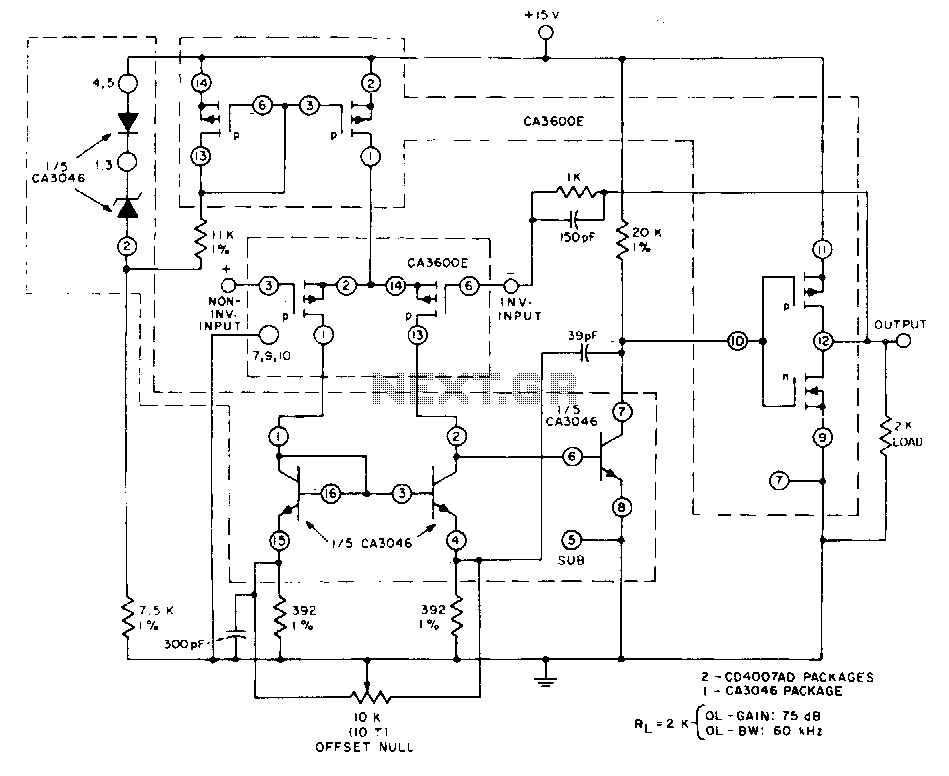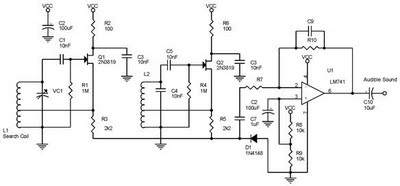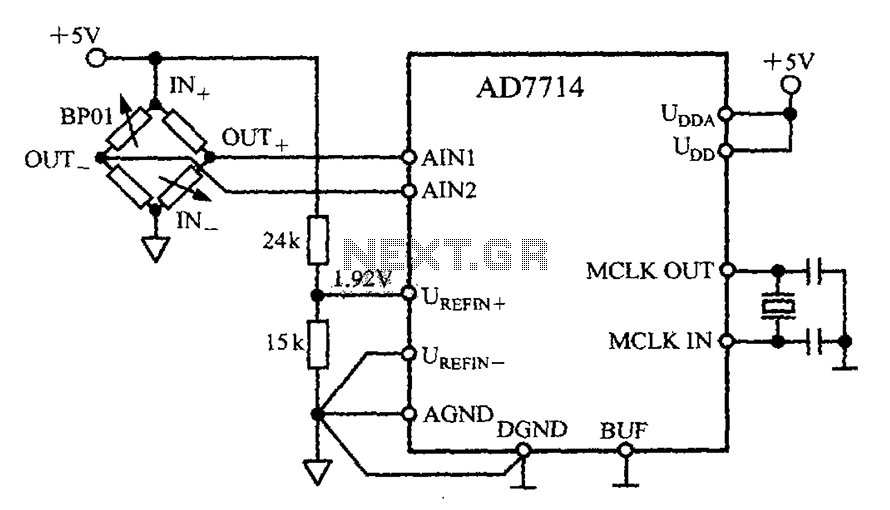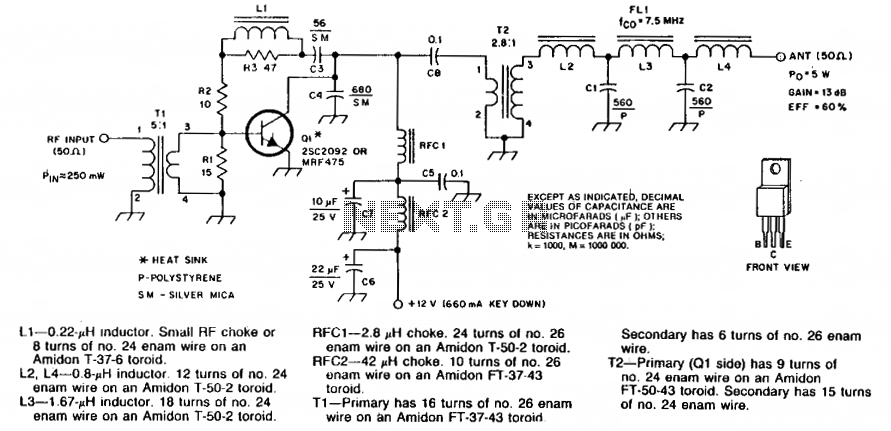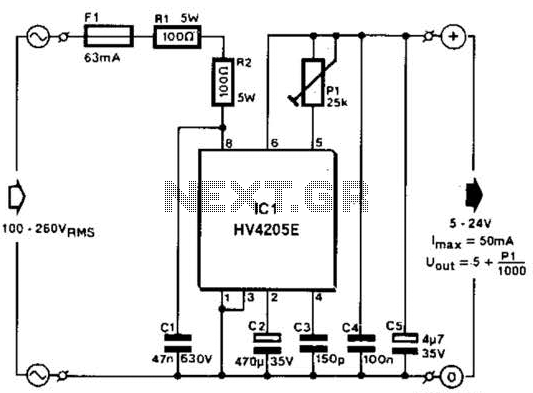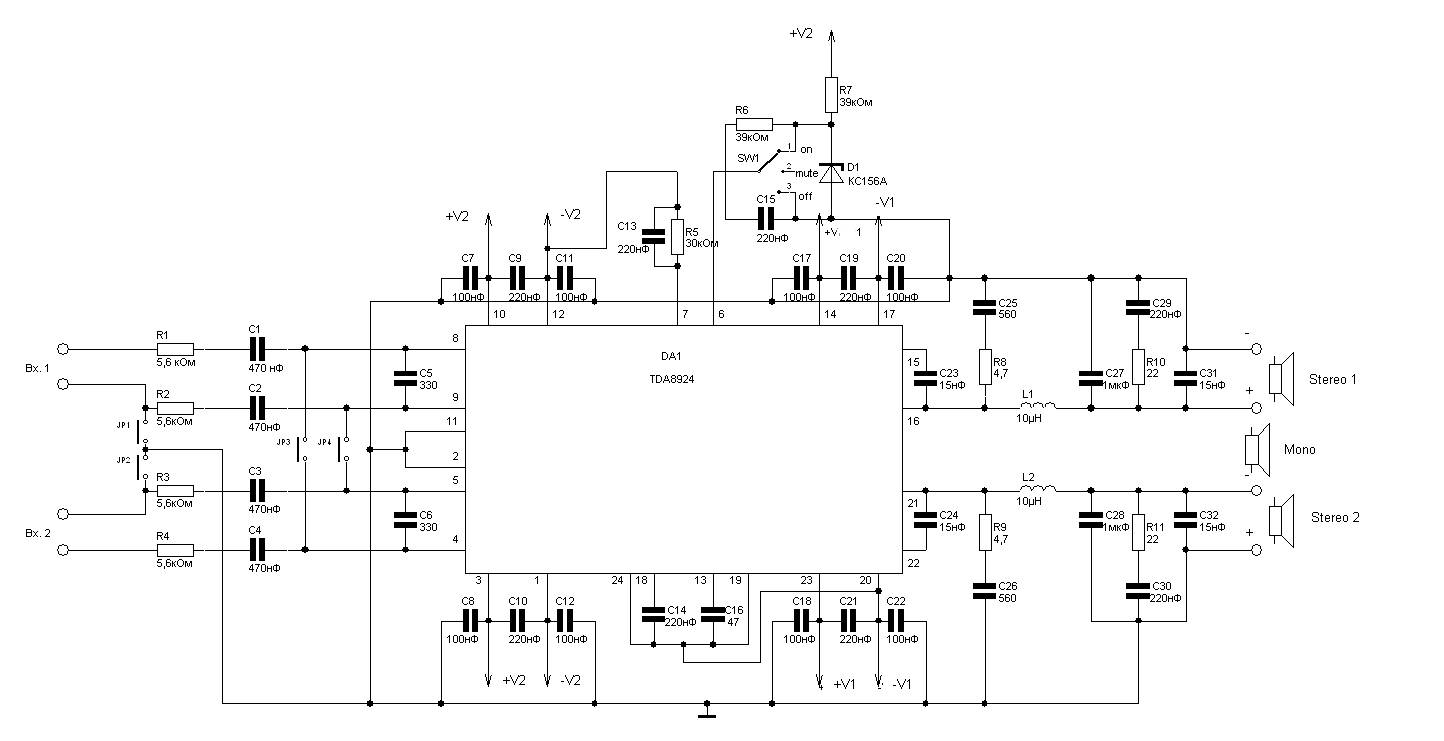
A third power supply overcurrent protection circuits
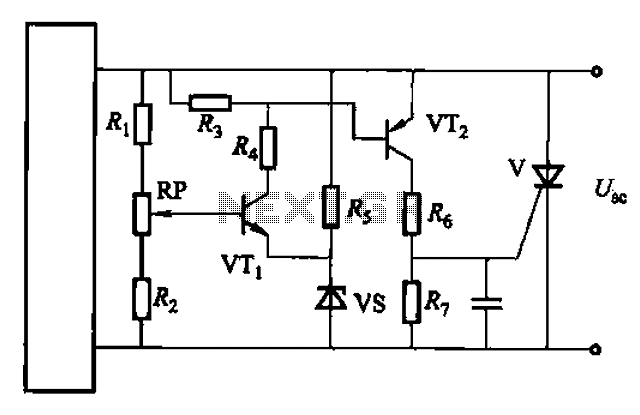
Both circuits are designed solely for overcurrent protection in power supply applications.
The circuits in question serve as critical components in safeguarding power supply systems from overcurrent conditions. Overcurrent protection is essential in preventing damage to electrical components and ensuring the reliability and safety of power systems.
Each circuit typically incorporates a sensing mechanism that detects current levels exceeding a predetermined threshold. When an overcurrent situation is identified, the circuit activates a protective response, which may include disconnecting the load, signaling an alarm, or triggering a circuit breaker.
Commonly, these circuits may utilize components such as fuses, circuit breakers, or electronic current sensors integrated with control circuitry. The design may involve operational amplifiers for current sensing, alongside resistors to set the threshold levels.
In practical applications, the circuits can be configured to respond to various load conditions, whether in industrial settings, consumer electronics, or renewable energy systems. The integration of these circuits enhances the overall safety and longevity of power supply systems, minimizing the risk of overheating, fires, or equipment failure due to excessive current flow.
Overall, the implementation of overcurrent protection circuits is a fundamental practice in electrical engineering, ensuring that power supplies operate within safe parameters while providing reliable service. Both circuits are applicable only to have overcurrent protection power supply.
The circuits in question serve as critical components in safeguarding power supply systems from overcurrent conditions. Overcurrent protection is essential in preventing damage to electrical components and ensuring the reliability and safety of power systems.
Each circuit typically incorporates a sensing mechanism that detects current levels exceeding a predetermined threshold. When an overcurrent situation is identified, the circuit activates a protective response, which may include disconnecting the load, signaling an alarm, or triggering a circuit breaker.
Commonly, these circuits may utilize components such as fuses, circuit breakers, or electronic current sensors integrated with control circuitry. The design may involve operational amplifiers for current sensing, alongside resistors to set the threshold levels.
In practical applications, the circuits can be configured to respond to various load conditions, whether in industrial settings, consumer electronics, or renewable energy systems. The integration of these circuits enhances the overall safety and longevity of power supply systems, minimizing the risk of overheating, fires, or equipment failure due to excessive current flow.
Overall, the implementation of overcurrent protection circuits is a fundamental practice in electrical engineering, ensuring that power supplies operate within safe parameters while providing reliable service. Both circuits are applicable only to have overcurrent protection power supply.
Warning: include(partials/cookie-banner.php): Failed to open stream: Permission denied in /var/www/html/nextgr/view-circuit.php on line 713
Warning: include(): Failed opening 'partials/cookie-banner.php' for inclusion (include_path='.:/usr/share/php') in /var/www/html/nextgr/view-circuit.php on line 713
